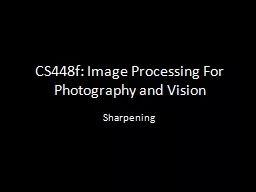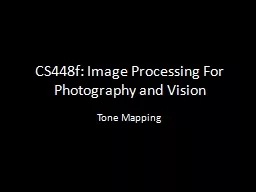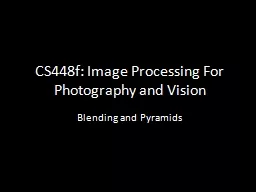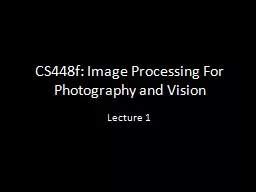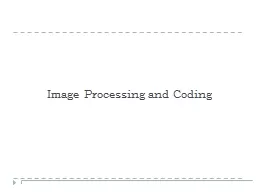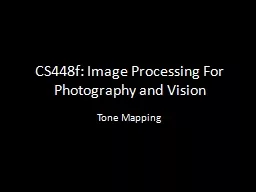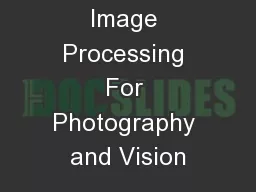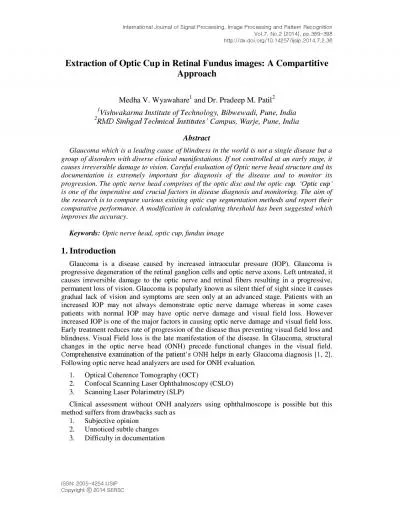PPT-CS448f: Image Processing For Photography and Vision
Author : faustina-dinatale | Published Date : 2018-09-21
Sharpening Sharpening Boost detail in an image without introducing noise or artifacts Undo blur due to lens aberrations slight misfocus Recall Denoising Input Signal
Presentation Embed Code
Download Presentation
Download Presentation The PPT/PDF document "CS448f: Image Processing For Photography..." is the property of its rightful owner. Permission is granted to download and print the materials on this website for personal, non-commercial use only, and to display it on your personal computer provided you do not modify the materials and that you retain all copyright notices contained in the materials. By downloading content from our website, you accept the terms of this agreement.
CS448f: Image Processing For Photography and Vision: Transcript
Download Rules Of Document
"CS448f: Image Processing For Photography and Vision"The content belongs to its owner. You may download and print it for personal use, without modification, and keep all copyright notices. By downloading, you agree to these terms.
Related Documents

